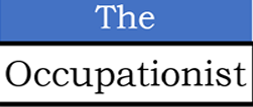HRA (health risk assessment) shouldn’t be forgotten just because employees are working from home. Home is their new office and hence HRA remains a good practice to identify risks and mitigating them to ALARP (as low as reasonably practicable).
It is good to know the health risks – because the unknown will cost you more!
However, reader should be aware that HRA are of 2 types – PHRA and OHRA, where P is for personal and O for occupational.
PHRA is personal health risk assessment and it involves checking a person’s health status by doing a medical check and to correct abnormalities, if any.
OHRA is a method by which health risk due to the job or exposure to hazards at workplace are identified and assessed so that solutions can be provided to eliminate, control or reduce those risks.
The aim of OHRA is 1. to know what are the hazards, 2. what can happen due to the hazards, 3. how likely can it happen, 4. if it happens what are the consequences, and 5. to develop a plan to mitigate the identified hazards.
OHRA for employees working from home (WFH) must continue as part of OH activity. Accurately described, it is not just work from home but what part of the home or sometimes even a new location as employees relocated themselves and have worked from dining tables, kitchen, beds, on the floor etc. And that is why it is not just WFH but WoFA (work from anywhere).
No one was ready for Work From Home, not even Satya Nadella, the executive chairman and CEO of Microsoft. Very few had the resources of having a dedicated workplace at home. It added to the woes when both spouses were working as there were space constraints in most homes.
No one was ready for Work From Home, not even Satya Nadella, the executive chairman and CEO of Microsoft.
Just having a HRA program will not help anyone unless employees are engaged into it. The HRA is a set of questions that the employee answers and then together with the supervisor completes it.
When the HRA is completed, the health risks are known both to the employee and the supervisor. Once known, steps are taken to reduce the health risks to ALARP which leads to minimum ill-health in the individual as well as collectively in the organization.
For example, if employees working from home are given a set of questions involving health problems they are facing – the inference would include aches and pains, stress etc. along with the causes. Now, it is the supervisor who works and mitigates these risks.
In addition to the supervisor of the employee, the mitigation of health risks identified in HRA often requires medical, HR, administrative and even leadership involvement.
If the health risks identified in HRA are addressed, the net outcome less of ill-health (sickness absence), lower healthcare costs and almost no legal liability.
To understand more and/or to implement HRA the reader may contact



